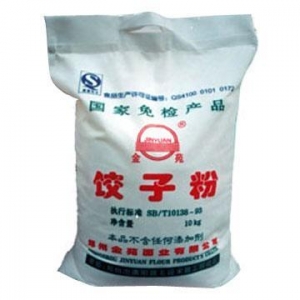Market research: Flour market in China
Chinese culture, particularly Chinese traditional cuisine, implies active use of flour; Chinese noodles, bakery and even some of the main meals contain flour as one of the main ingredients. The flour market in China is supposed to be the largest in the worlds grinding more than 115 million tons of wheat annually. However, rapid economic development and urbanization significantly shifted pattern of flour consumption in China.
Flour consumption in China
As recent market research data show, household consumption of flour accounted for 60% of total consumption in 2006, but it dropped to 45% 5 years later. This might be explained by changing style of life in China, which is becoming as busy as that of Europeans. To compare, in 2011, while Chinese households consumed 45% of flour, the Europeans demanded only 12%. It is suggested by market research analysts, that household consumption in China will drop even further and reach European level in the foreseeable future. Consumption of flour is gradually shifting from private households to manufacturers, which use it as one of the ingredient in the production of snacks, bakery and noodles.
Flour market in China is not mature
Flour market in China is not always stable. This is explained by outdated technology, used to process flour, and price war between farmers, which occur due to cheap labour. Chinese flour market does not have proper regulations regarding payment period, quality of a product and its price. As a result, noodle manufacturers tend to delay payments to flour processing companies to enjoy “non-interest free credit”. Moreover, due to cheap labour and excess production capacity flour factories apply dumping techniques to get read of competitors. Technology, used for flour processing is not up-to-dated in all factories, what creates unfair competition and inefficient production. The leading company in the industry in terms of quality and production volumes is China Flour Mills Group. However, as long as the Flour market in China is diverse and represented by a lot of large, medium and small farmers, it is fairly difficult to identify few companies, which control a considerable share of the market. Even though market participants seek to drop their price, the yearly price for wheat flour is increasing from year to year being $464 per MT in 2009, but rising to $680 per MT in 2013. This might be explained by inflationary pressure on Chinese currency, production inefficiency and rising costs.
As it was noticed above and as market research showed, China, being one of the largest wheat flour producers in the world, still needs a reconstruction of the industry. Inefficient production and unused capacity arise from out-of-dated equipment, used to grind wheat, and dumping strategies applied by competitors. The trend of decreased household consumption is currently observed, which is explained by high economic growth and increasing living standards of Chinese people; on the contrary, more wheat is purchased by manufacturer every year due to increased consumption of prepared food. This changes the landscape of flour market in China.
For further information, refer to:
https://www.flourmillers.eu/uploads/China_wheat_milling_sector_Rabobanknote092012.pdf
https://www.davidmckee.org/wp-content/uploads/2007/08/china040900worldgrainmillingarticle.pdf






